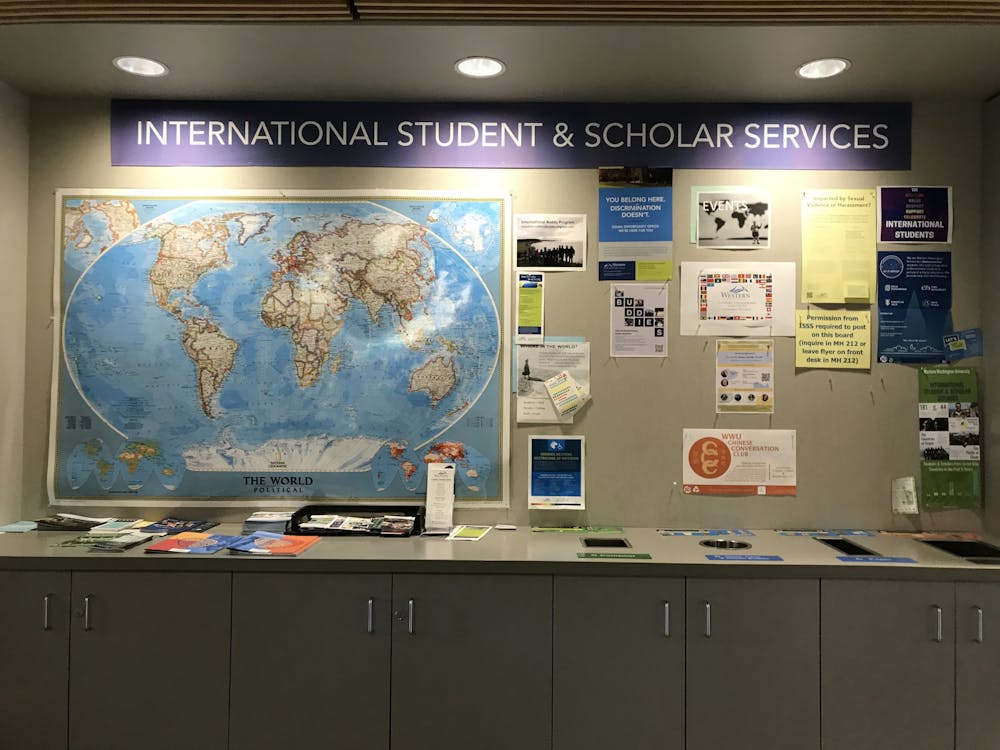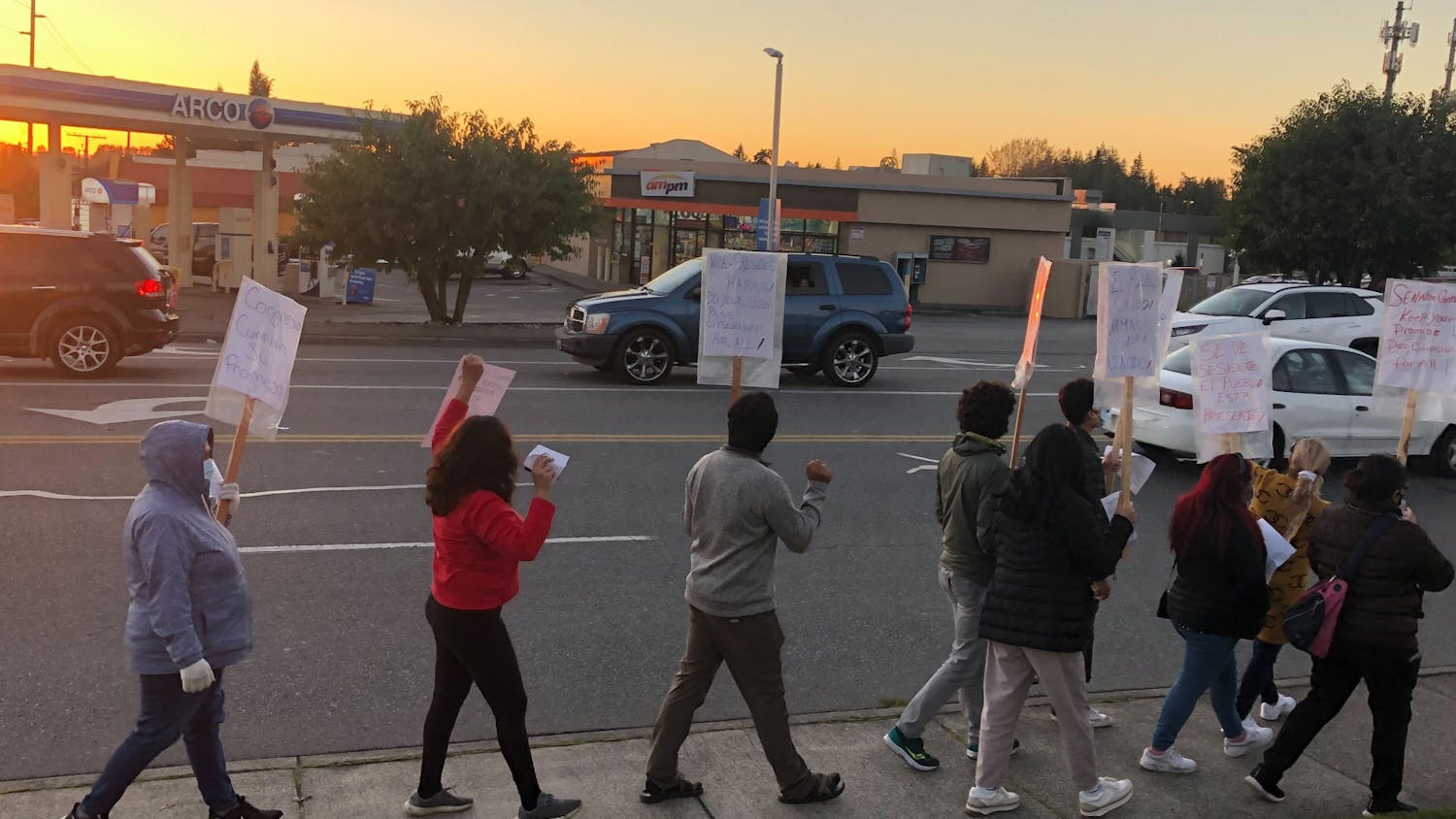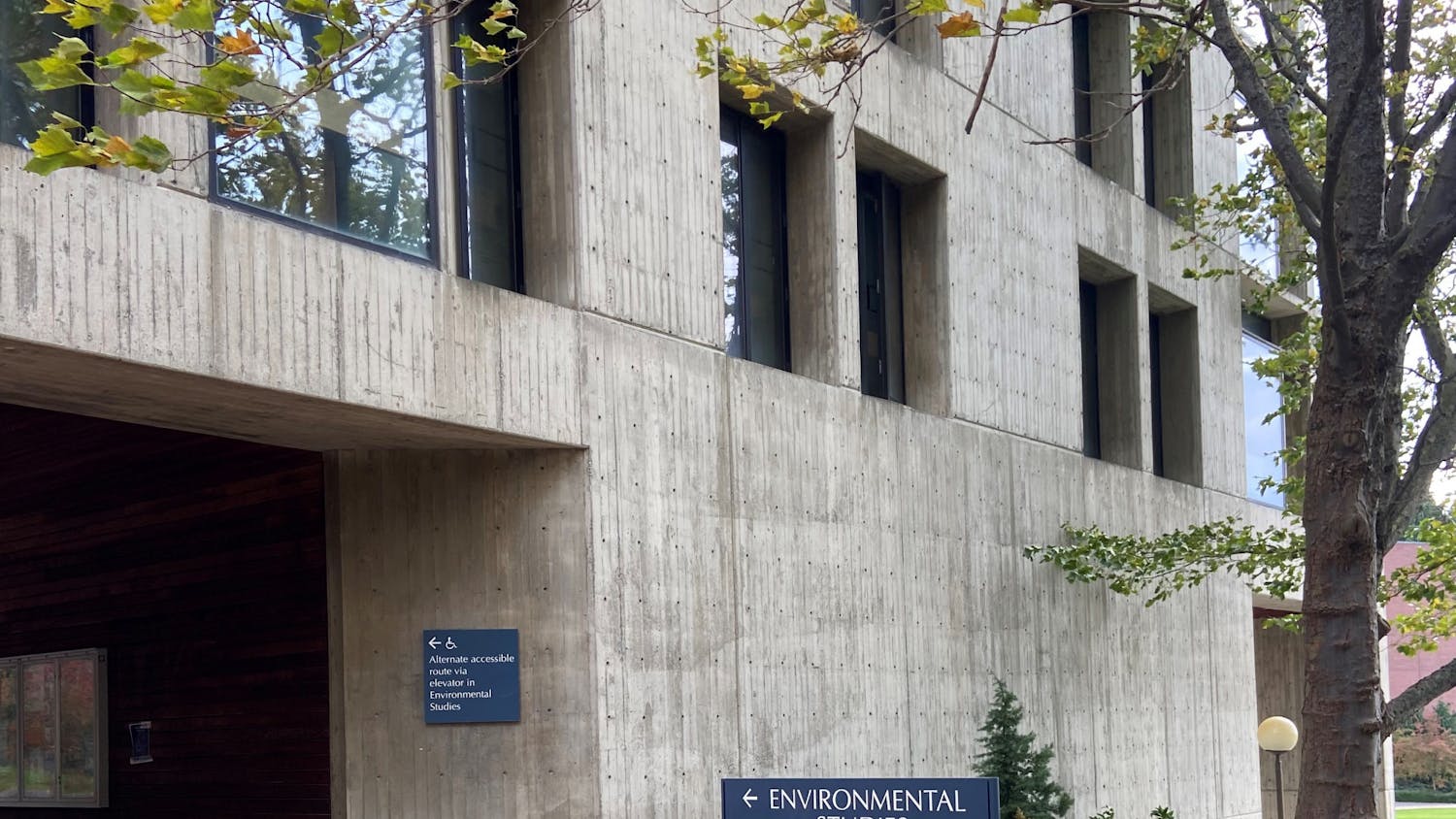International student enrollment has gone down significantly at Western Washington University as students returning to campus face COVID-19 related challenges including changing travel restrictions and closed U.S. consulates.
Many students have had to decide whether to continue their studies while remaining in the U.S. or return back to their home countries and attend classes remotely, said Richard Bruce, Western’s director of International Student and Scholar Services.
Many U.S. consulates, which provide visas and other necessary paperwork for international travel, have remained closed since the beginning of COVID-19 lockdowns. This new challenge in getting visas, as well as different and changing travel restrictions in different countries, has made transitioning international students back to campus much more complicated.
“We were not able to bring in any exchange students due to [COVID-19] for the 2020-2021 academic year. Also, the number of intensive English students dropped dramatically,” Bruce said. “However, as Western begins to come back to semi-normal, our numbers are beginning to bounce back too.”
With many different countries having different travel restrictions, ensuring international students are able to get to their universities in the U.S. has been a major challenge this past year.
“Travel restrictions have been frustrating, and due to the closing of U.S. consulates abroad some students have not been able to get visas for coming to study in the U.S.,” Bruce said. “While students have been studying all online, figuring out where students are — back in the U.S., back in their home country, or somewhere else. That has made it harder to make sure students can maintain their F-1 student visa status.”
An F-1 student visa allows individuals to enter the U.S. as a full-time student at an accredited university or other academic institution.
Western has not been the only institution to have a drop in international student enrollment. Kelly Kester, the director of international programs at Whatcom Community College, said they’ve also had a dip in international enrollment.
“There have been a few students who’ve been returning, but not a lot, and part of this is because we’re a two-year program,” said Kester. “A lot of students have finished their degrees and have transferred to universities without returning to our campus.”
The decline in international enrollment is nothing new. Kester said Whatcom has seen a major and continuing decline since 2016 due to the political climate.
“Overcoming the perception that the U.S. is a violent place should be a priority,” said Kester. “Especially in regards to gun violence.”
Kester also commented on the challenges of getting visas with so many U.S. consulates still closed due to COVID-19, adding that fewer and more expensive international flights only compounds the issue.
“In some cases, due to [COVID-19] lockdowns, students were not able to leave the U.S. and return to their countries,” said Bruce. “And now some students are not able to come back to the U.S. from their home countries.”
Kayla Croney, a fourth-year international Western student from Barbados, said constantly changing regulations in her home country has added to the already difficult process of returning to the states.
“Regulations have been changing pretty regularly,” Croney said. “For a while we were under complete home restrictions. Almost all jobs went remote. It was only, I’d say, in the last six months things have lightened up to the point where you can go out with a small group. Most jobs, while you can go back in the office, are still from home.”
Croney said the anxiety of traveling on a plane during the ongoing pandemic was one of the most stressful parts of the transition. However, once she was able to get her COVID-19 test and vaccine paperwork, the transition went smoothly.
“The travel is fine, because I’ve done the whole traveling between the U.S. and Barbados trip many times,” said Croney. “So beyond having to wear a mask, once I showed that I had my [COVID-19] vaccine it was pretty easy sailing. Almost normal, honestly.”
Countries with smaller populations have also had extra challenges with COVID-19 cases, due to even small outbreaks having a much bigger impact. Barbados, which has a population of just over 285,000, had an uptick of around 100 cases but had a much larger impact than it might’ve elsewhere, Croney said.
As we slowly transition back to normalcy, remote learning is a continued struggle for all Western students and faculty. For international students, large time differences presented an unexpected challenge.
“I had a class where it went until 8:30 U.S. time, but that’d be 11:30 Barbados time,” Croney said.
The lockdown has, however, provided an opportunity for Western to expand and develop its remote tools as well. Bruce said advising students virtually has been a positive development.
“Students can meet with us from wherever they are in the world,” Bruce said. “Also, we have developed remote and long-term orientations for new students on Canvas that they can access months before they plan to arrive at Western. These methods we hope to continue with in the future.”
Kester said that Whatcom Community College has been able to reach a much wider audience with virtual and online resources.
“We’re seeing a lot of colleges and universities trying to find lessons in all this, and get an idea of what normal will become,” Kester said. “We’re starting to see the old normal is never going to come back, and we’re now looking at a new normal. And we have to ask — how do these online services fit?”
Students also had some positive takeaways from being remote. For some, it meant extra time to spend at home with friends and family.
“[COVID-19] and having to go back home was actually really good for me. It feels bad to say, but it was nice being back home [with] family,” Croney said. “After I did my quarantine I was basically home with my family for that year. And that was a whole year that I had with them that wasn’t planned.”
After the year off, students have been eager to return to campus life and reconnect to the university community.
“They’re excited to have that human contact, and there’s a hunger to have that on-campus experience,” said Kester.
As the university begins to open back up, allowing students to return to classrooms, Bruce said Western hopes that campus, along with their international students, will begin to bounce back to full capacity with the rest of the country.
“The exchange of people, ideas and cultures is necessary for everyone at Western to be able to engage with others on a global scale,” Bruce said. “I continue to be impressed with international students’ resilience while dealing with uncertainties around online study, isolation, being away from friends and family, travel, etc. and still pursuing their goal of completing their education in the U.S.”






